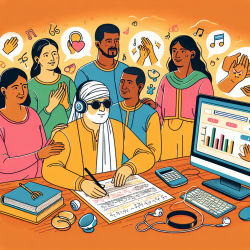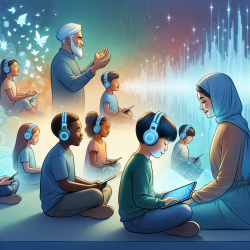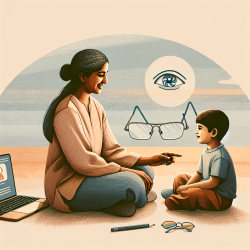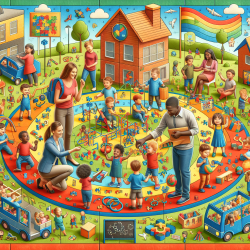In the pursuit of improving outcomes for children with disabilities, especially those who are blind, it's crucial to adopt data-driven approaches and implement proven strategies. The research article titled "Community rehabilitation of disabled with a focus on blind persons: Indian perspective" offers valuable insights into effective community rehabilitation strategies that can be leveraged by practitioners worldwide.
Key Takeaways from the Research
The study highlights several key areas that practitioners can focus on to enhance their rehabilitation services:
- Early Detection and Intervention: Early diagnosis and timely intervention are critical. The study emphasizes the importance of identifying visual impairments as early as possible to provide appropriate support and resources.
- Comprehensive Rehabilitation Services: Rehabilitation should encompass medical, social, educational, and vocational measures. This holistic approach ensures that individuals receive the support they need to achieve the highest possible level of functional ability.
- Community-Based Rehabilitation (CBR): The study underscores the effectiveness of community-based rehabilitation programs. These programs leverage local resources and community involvement to provide accessible and sustainable support for individuals with disabilities.
- Assistive Devices and Technology: Providing access to modern assistive devices and technologies can significantly improve the quality of life for blind individuals. The research outlines various devices such as Braille duplicators, talking books, and electronic magnifiers that can aid in education and daily living.
- Training and Capacity Building: Training healthcare professionals, educators, and community workers is essential. The study highlights the need for specialized training programs to equip these individuals with the skills necessary to support the blind effectively.
Implementing Research Outcomes
Practitioners can take several steps to implement the findings of this research:
- Develop Early Screening Programs: Establish early screening programs in schools and communities to identify children with visual impairments at a young age.
- Adopt a Holistic Rehabilitation Approach: Integrate medical, educational, and vocational services to provide comprehensive support for blind individuals.
- Promote Community-Based Programs: Collaborate with local organizations and community members to develop and implement community-based rehabilitation programs.
- Invest in Assistive Technologies: Ensure access to a range of assistive devices and technologies that can aid in the education and daily activities of blind individuals.
- Provide Specialized Training: Offer training programs for professionals working with blind individuals to enhance their skills and knowledge.
Encouraging Further Research
While the study provides valuable insights, ongoing research is essential to continue improving rehabilitation services for blind individuals. Practitioners are encouraged to:
- Stay Updated: Keep abreast of the latest research and developments in the field of community rehabilitation for the blind.
- Conduct Local Studies: Conduct research within their own communities to identify specific needs and develop tailored interventions.
- Collaborate with Researchers: Partner with academic institutions and research organizations to contribute to the body of knowledge and improve practices.
To read the original research paper, please follow this link:
Community rehabilitation of disabled with a focus on blind persons: Indian perspective.










